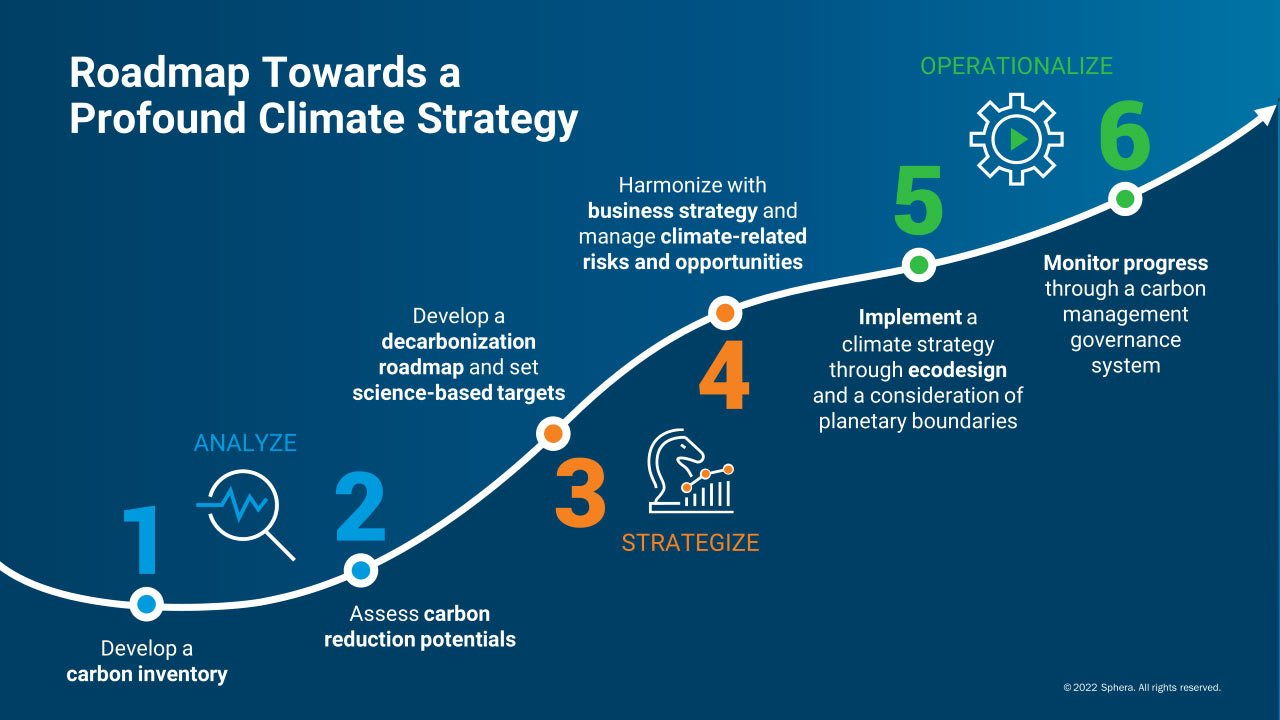The Intergovernmental Panel on Climate Change (IPCC) issued its third part of the Sixth Assessment Report on April 4th, stating that society, industry and companies must focus on carbon minimization and transition from fossil fuels to renewables. The UN body advises this approach over placing trust in future climate technologies, warning that climate change is accelerating much faster and climate impacts and their corresponding social, structural and economic implications are being realized earlier than scientists had expected.
Companies should not question whether to create a climate target, but rather, determine how quickly they can implement their decarbonization pledge to reduce their direct Scope 1 and 2 emissions and Scope 3 value chain emissions. This being said, if a company wants to develop a profound climate strategy, the strategy needs to consist of iterative loops and the inclusion of carbon reduction as a KPI for any business decision.
Carbon Market Watch’s new report, Corporate Climate Responsibility Monitor, analyzed 25 of the world’s largest companies, which accounted for 5% of global GHG emissions and revenues of USD 3.2 trillion in 2020. In their climate pledges, the companies’ net–zero targets commit to only a 40% reduction in aggregated emissions, not 100%, as suggested by the term “net zero”. Shiny climate pledges are often ambiguous, and emission reduction commitments are limited. Regarding companies with 1.5°C (or 2°C) targets approved by the Science-Based Targets Initiative (SBTi) – the Carbon Market Watch report considers the ratings of these companies to be contentious due to subtle details and loopholes resulting from the organization’s role in defining the standard and assessing companies’ performance against its own criteria. Carbon Market Watch also cites a disappointing lack of urgency among companies that so far have failed to use available emission reduction measures.
Furthermore, a 2021 Carbon Disclosure Project (CDP) report shows that significant gaps exist in the disclosures of companies’ climate strategies. Just over a third of the companies reviewed are considered to have credible emissions reduction targets and less than 1% is reporting on all of the CDP’s key climate transition-focused indicators. Of the more than 13,100 organizations that disclosed to the CDP, fewer than one third (4,002) reported developing a low-carbon transition plan. Additionally, while most organizations disclosed emissions reduction targets, the CDP reported that only 35% are credible or validated by the SBTi (the CDP is a founding SBTi organization). Only 1% of companies disclosed on all 24 of the CDP’s climate transition plan indicators. Of the roughly 4,800 companies that said climate-related risks and opportunities influenced their strategies, only half of them reported that they have developed a low-carbon transition plan.
So, What Makes a Good Climate Pledge?
The Corporate Climate Responsibility Monitor shows how companies can develop climate pledges and innovate solutions to the climate crisis. This good practice for climate responsibility includes showing transparency and integrity in: (1) tracking and disclosing emissions; (2) setting specific and substantiated targets; (3) reducing emissions; and (4) supporting climate contributions and offsetting.
1. Tracking and disclosing of emissions should include an annual, full disclosure of GHG inventory; a breakdown of Scope 1, 2 and 3 emissions; and the presentation of historical and activity data for each emission source. It also includes disclosing emissions of subsidiaries and non-GHG climate forcers.
2. Setting specific and substantiated targets in the main headline pledge cover all Scope 1, 2 and 3 emissions, are in line with 1.5°C trajectories and sector-specific benchmarks and are independent from offsetting. This also includes setting interim targets in line with the long-term vision in terms of depth and scope, with a first target requiring immediate action and accountability (<5 years).
3. Reducing emissions implementing comprehensive, deep decarbonization measures and disclosing the details for replication and the identification of new solutions. This also includes sourcing the highest-quality renewable energy available and disclosing its full details.
4. Climate contributions and offsetting mean providing substantial funding for beyond value chain mitigation activities without claiming the neutralization of the company’s own emissions. And it recommends avoiding misleading claims or pledges and investing only in high-quality credits that lead to an additional climate impact that is permanent, accurately quantified and supports inclusiveness.
Developing a Profound Climate Strategy – How Can Companies Achieve Deep Decarbonization?
To incorporate a climate strategy by setting and achieving science-based climate targets and then transform and harmonize the business strategy accordingly, companies can follow these steps:

1. Develop a carbon inventory:
- Set up an annual, iterative, deepening emissions quantification process.
- Implement a software-based, comparable, manageable carbon accounting.
A climate strategy starts with an in-depth, corporate-level assessment of carbon emissions, from Scope 1 to Scope 3, as well as the development of a profound understanding of the carbon footprint of major products.
This exercise is an iterative task and needs to be disclosed on the corporate level annually. The corporate carbon footprint needs to be “deepened,”—in other words, detailed over time and in line with the maturity level of an organization’s activity data management. The challenge occurs mainly in developing an understanding and a method for the organization’s indirect Scope 3 emissions and linking this with product information. This means a company needs to combine this with an understanding of the product carbon emissions over the entire portfolio .
2. Assess carbon reduction potentials:
- Assess carbon hotspots along the value chain.
- Analyze mitigation measures for direct and indirect emissions.
Deep decarbonization includes the assessment of carbon hotspots along the value chain. This includes understanding reductions of direct emission sources (Scope 1), the purchase of energy (Scope 2), and indirect upstream and downstream emissions in a company’s value chain (Scope 3). Scope 3 carbon reduction efforts include the assessment of reduction potentials at product level, from purchased materials, products and services, to the processing and use phase of a company’s own products. Here, life cycle assessment (LCA) expertise and a profound understanding of those materials and products is key.
3. Develop a decarbonization roadmap and set science-based targets:
- Develop climate scenarios and a decarbonization roadmap.
- Confirm the decarbonization trajectory through standards.
Once reduction potentials are assessed, companies need to develop decarbonization scenarios. This includes the construction of a business-as-usual scenario to understand the development of the carbon inventory with the business forecast and growth targets of the company. Based on this business-as-usual scenario, quantified mitigation measures and carbon reduction potentials need to be applied on a timeline sequence. Through this application, different corporate climate scenarios can be derived and discussed. The resulting and confirmed decarbonization trajectory leads to the development of a climate pledge, consisting of short-, medium- and long-term climate targets and the development of an overall net–zero target. This defined target then needs to be confirmed by standards, such as the science-based targets and the net-zero standard.
4. Harmonize your holistic climate strategy with business strategy and manage climate-related risks and opportunities:
- Create a business case for climate strategy.
- Understand Task Force on Climate-related Financial Disclosures (TCFD) recommendations.
- Prepare governance and KPIs.
A business strategy is about value creation. Climate strategy requires the reformulation of what is of value for a company and, therefore, requires business model innovation for a new form of value creation and ecosystem thinking. At this point, benchmarking, positioning around your own climate trajectory and building a business case is needed. This is then discussed with the C-suite to align the climate strategy with the general business strategy and then include the “KPI climate” in every key business decision.
Furthermore, the understanding and incorporation of climate-related risks and opportunities in line with the TCFD recommendations is needed. The recommendations are structured around four thematic areas that represent core elements of how organizations operate: governance, strategy, risk management, and metrics and targets.
Finally, a profound climate strategy needs an implementation strategy built on a climate governance structure and the development of respective KPIs. This means identifying and defining clear structures, required resources, a timeline and responsibilities for achieving the climate ambitions. It should provide a framework for ensuring the integration of climate and business strategy. Translating the strategy into the right key performance indicators for each area will ensure that the implementation remains on track and ongoing.
5. Implement a climate strategy through ecodesign and a consideration of planetary boundaries:
- Introduce internal carbon price.
- Use ecodesign for sustainable product innovation.
- Consider other environmental impacts to avoid burden shifting.
The implementation paves the way for success as a true climate leader. Knowledge transfer is key to ensuring that all functions are in line with the transformed business model. Every decision and action require carbon management, and tools such as an internal carbon price mechanism help to steer this.
The Scope 3 challenge shows that a company’s product from sourced materials, production and downstream application, and use phase is key. Therefore, ecodesign plays a significant role. Ensure that you have a core ecodesign team that uses the respective LCA tools on the product level and develops ecodesign tools .
Finally, the focus on reducing GHG emissions often leads to burden–shifting towards other environmental impacts that are just as important for emissions reduction progress. Make sure that the company understands all planetary boundaries around climate change, biodiversity integrity, ocean acidification, depletion of the ozone layer, atmospheric aerosol pollution, biogeochemical flows of nitrogen and phosphorus, freshwater use, land-system change, and release of novel chemicals.
6. Monitor progress through a carbon management governance system:
- Establish an iterative review of climate ambition and carbon reduction potential.
- Disclose progress annually.
This is not a one-time event! Companies need to constantly review and assess their climate ambition and progress and understand potential targets and delays for short-term goals. This is needed to make sure that the organization fully utilizes its carbon reduction potential and is in line with the overall decarbonization roadmap. Furthermore, organizations need to quantify and disclose their emissions and their reduction progress annually.
This can only be ensured through a corporate ESG governance system that receives all quantitative information from the inventory, the reduction potentials and decarbonization roadmap, as well as qualitative insights on risks and opportunities, reporting frameworks and respective KPIs.

